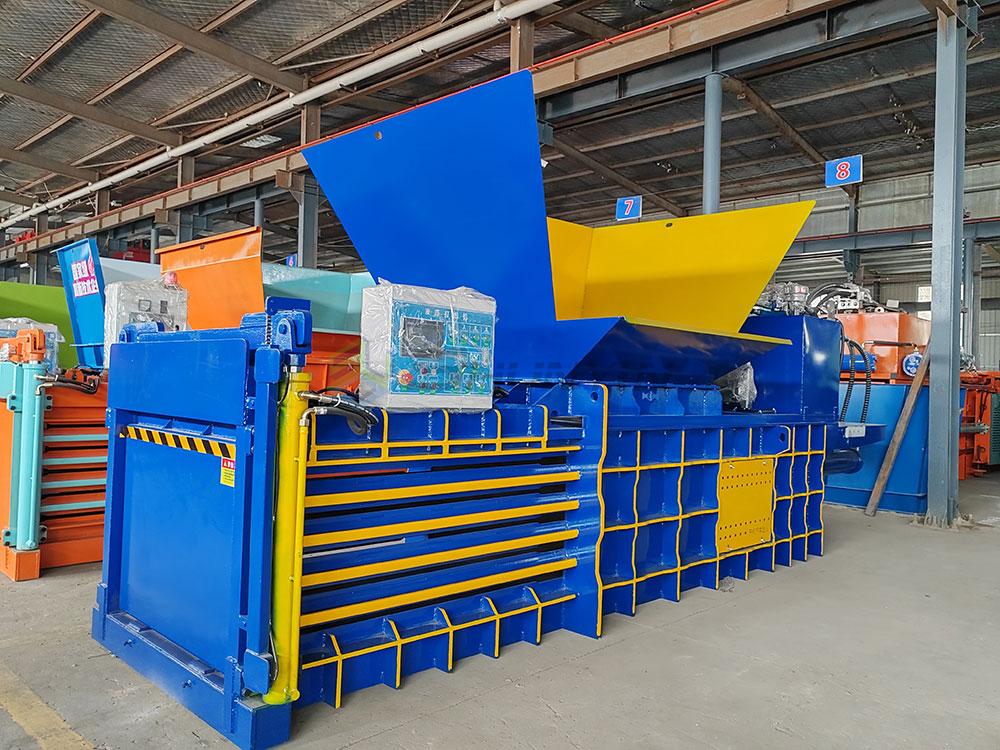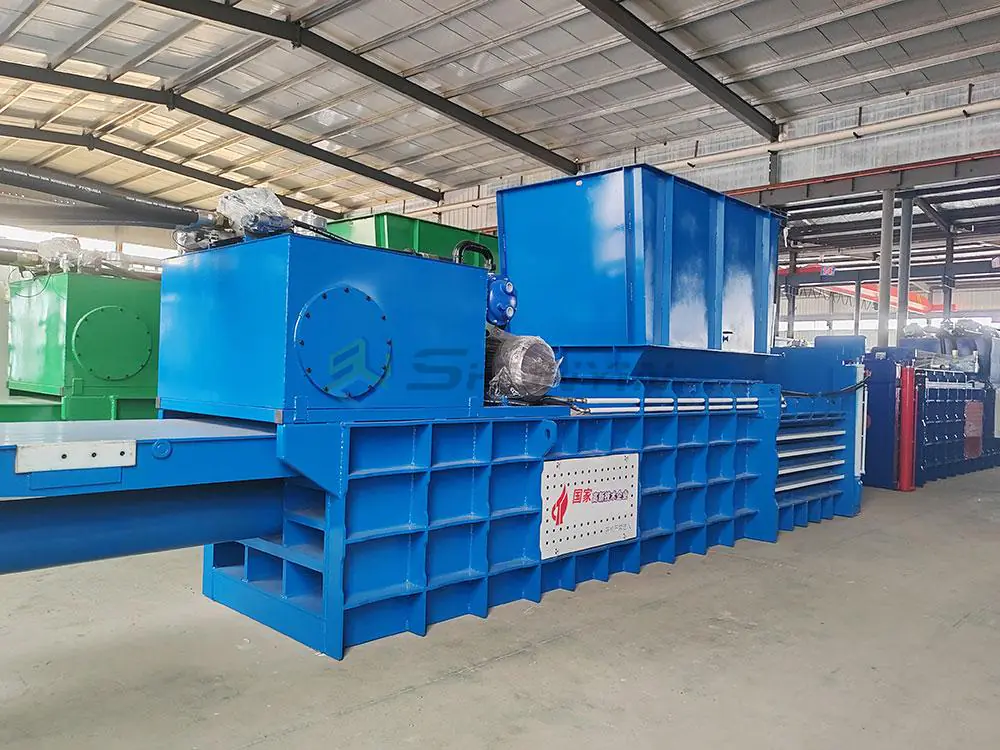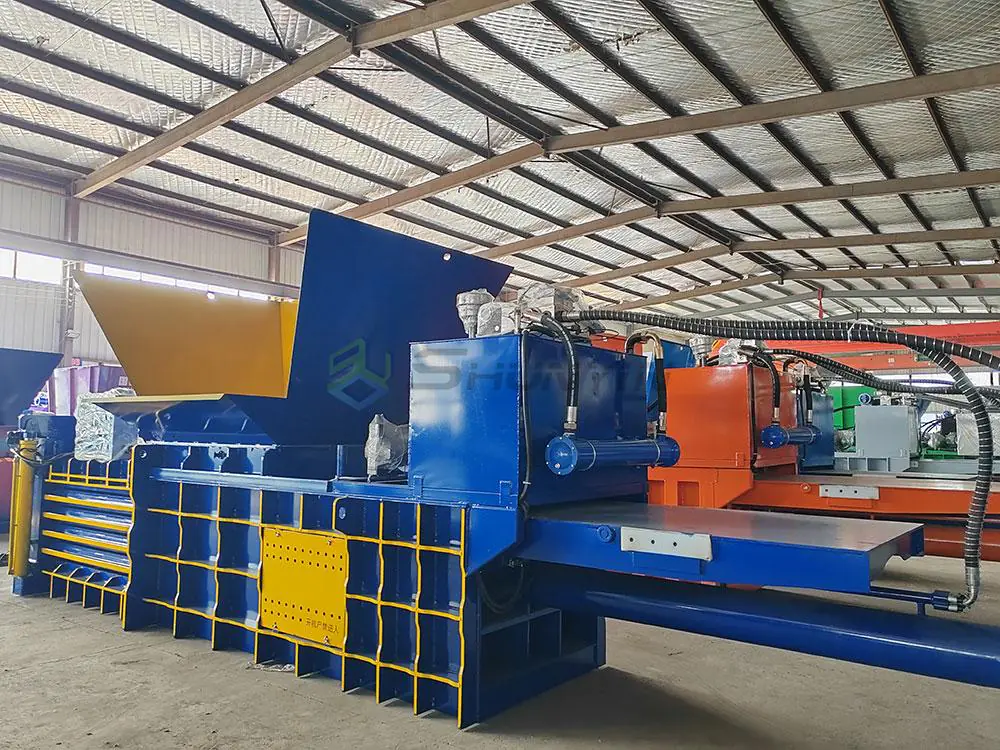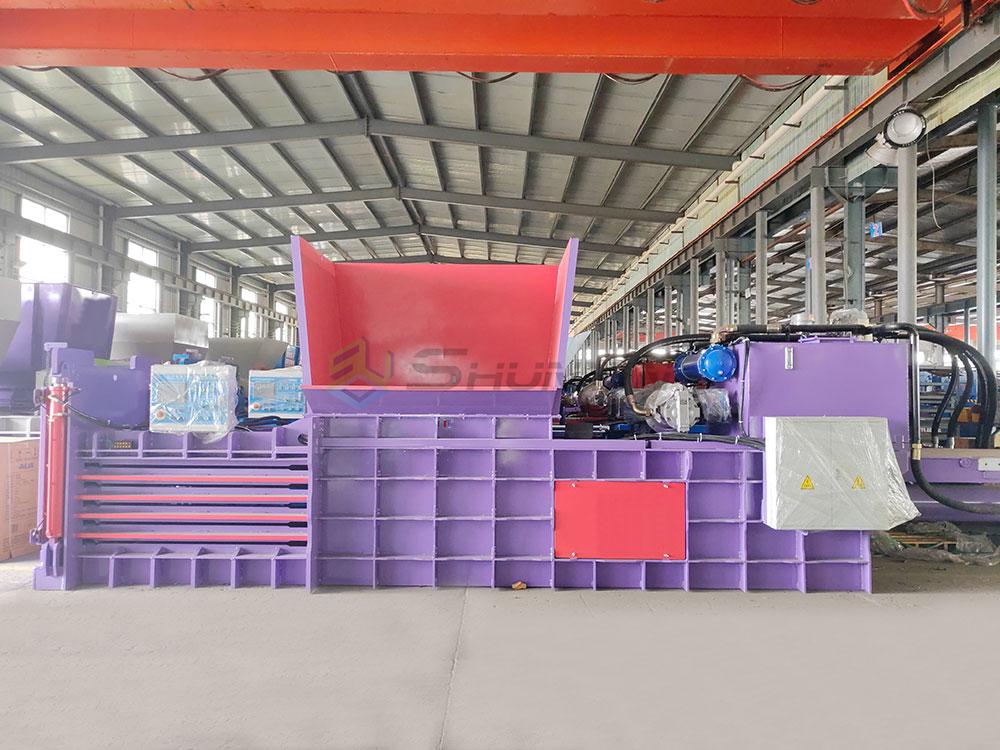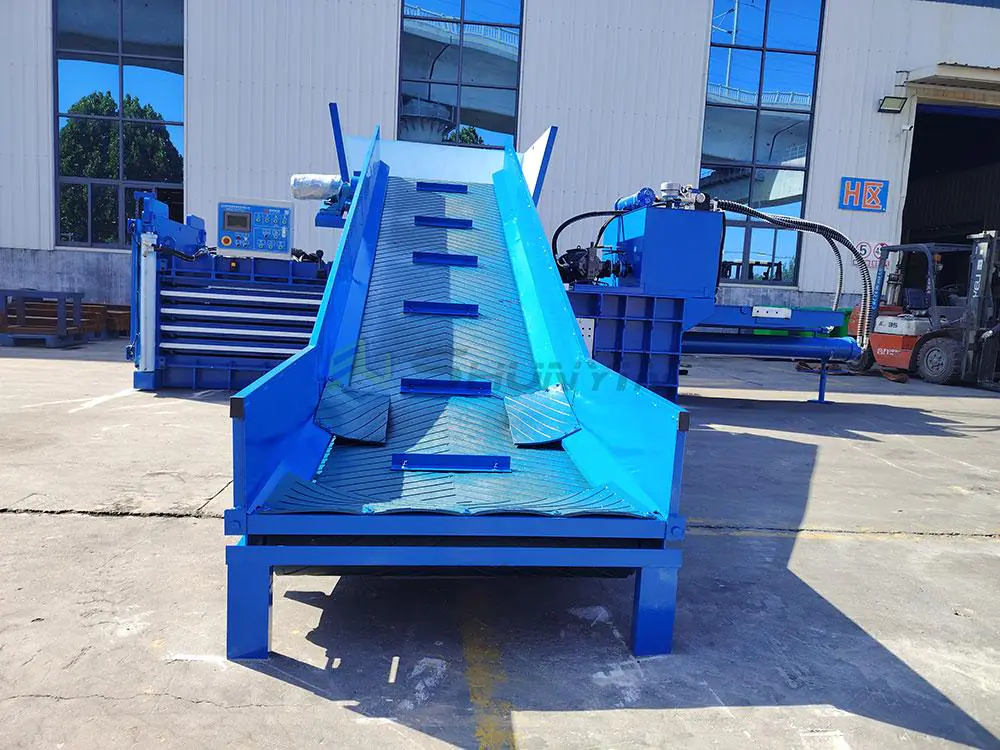Material overflow forces recycling plants into costly shutdowns weekly? Storage bottlenecks escalate operational expenses daily. Horizontal balers eliminate these disruptions with 98% compaction density and automated throughput systems.
Recycling plants rely on horizontal balers to process 10-60 tons/hour through hydraulic compaction systems, transforming loose material into high-density bales that maximize resale value and reduce storage space requirements by 80%.

Discover critical capabilities, cost-impact decisions, and configuration essentials driving modern waste recovery facilities.
What Is a Recycling Baler?
Material segregation errors waste 45 minutes per shift? Contamination reduces commodity value 30%. Recycling balers specialize in processing mixed streams under extreme pressure.
A recycling baler is a hydraulic press compressing paper, plastic, or metal into transportable bales weighing 300-1,200kg, using precisely calibrated force systems to achieve recycler-demanded density standards.

Core Operational Advantages
Baling Process Breakdown
| Component | Specification | Purpose |
|---|---|---|
| Feed Hopper | 3-5m³ capacity | Continuous material intake |
| Pre-press Ram | 25-50 tons force | Initial volume reduction |
| Main Chamber | Hardox 500 steel | Handles abrasive materials |
Recycling-Specific Features
-
Material Intelligence System
- Density sensors adjust pressure per material type
- Avoids bale explosion1 from metal contaminants
-
Grade Separation Technology Feature Cardboard Plastic Metal Min. Density 550kg/m³ 720kg/m³ 1,100kg/m³ Cycle Time 80 seconds 120 seconds Manual ejection Bale Size 1.2×0.8m 1.5×1.1m Custom
ShunYin Machinery solved Korean plant’s contamination issues using laser-guided sorting systems. Request a material test: WhatsApp 0086 13505379893.
How Much Is a Cardboard Baler?
Hidden energy consumption costs2 escalate prices 28%? Cheap hydraulics fail after 10,000 cycles. True equipment investment spans purchase price, certifications, and operational savings.
Cardboard balers cost $15,900-$198,000 determined by daily throughput (2-55 tons), bale density requirements (300-850kg/m³), and hydraulic systems (single/double ram), with premium models reaching ROI in 11 months.

Value-Oriented Investment Guide
True Cost Calculation
| Expense | Entry Level | Industrial Grade | Savings Impact |
|---|---|---|---|
| Initial Price | $18,000 | $98,000 | – |
| Energy Consumption | $1,200/month | $480/month | 60% lower |
| Maintenance | $9,000/year | $2,400/year | 73% reduction |
| Yearly Total | $32,400 | $10,560 | $21,840 saved |
Essential Upgrades Worth Paying For
-
Certification Packages
CE adds 8% cost but increases resale value 15%
OSHA compliance expands US market eligibility -
Throughput Enhancements Add-on Price Impact Auto-Feed Conveyor $12,000 40% labor reduction Dual-Ram System $25,000 Density increase 60%
Brazilian recycling center cut costs 22% using our certified refurbished units. Get budget proposal: [email protected]
Are Cardboard Balers Worth It?
Landfill fees consume profit margins monthly? $5 million warehouses waste space on loose storage. Our installations universally secure capital recovery within 14 months through resale markets and operational gains.
Cardboard balers yield 130% average ROI by eliminating $180,000/year waste fees, generating $50-140/ton bale revenue, and reclaiming 70% storage space for profit-generating operations.

Verifiable Financial Impact
Annual Savings Profile (Mid-Sized Plant)
| Category | Before Baler | After Baler | Recovery Value |
|---|---|---|---|
| Waste Fees | $230,000 | $34,500 | $195,500 |
| Storage Loss | $145,000 | $0 | $145,000 |
| Transport | $88,000 | $22,000 | $66,000 |
| TOTAL | $463,000 | $56,500 | $406,500 |
Revenue Multipliers
-
Bale Market Premiums
- Certified bales: 12-17% higher value
- Automated bundling attracts corporate buyers
-
Operational Synergies Resource Savings Mechanism Value Capture Labor Auto-tie systems replace 4 workers $180,000/year Insurance Safety-compliant equipment discount 8-12% premium cut
German waste processor achieved 9-month payback with our energy-recovery model. Calculate your projection: https://lemonchiffon-shark-638535.hostingersite.com/contact/
What Are the Different Types of Balers?
Vertical balers jam during 10-ton surges? Single-stream systems limit revenue diversity. Plant-grade balers demand material-specific configurations ensuring continuous processing.
Primary baler types include vertical balers (≤8 tons/day), horizontal balers (≤60 tons/day), auto-tie systems, and specialty balers for unique materials, each with density/volume tradeoffs critical for plant design.

Configuration Decision Matrix
Recycling Plant Application Guide
| Type | Capacity | Materials | Compact. Density | Limitations |
|---|---|---|---|---|
| Vertical | 3-8 tons/day | Cardboard | ≤350 kg/m³ | Manual ejection |
| Single-Ram Horizontal | 12-30 tons/day | Cardboard/PET | 550 kg/m³ | Manual feed |
| Two-Ram Industrial | 30-60+ tons/day | Metals/Mixed | 850 kg/m³ | Higher footprint |
Specialty Systems Comparison
-
Two-Ram Super Compactors
- Pre-press + main compression phases
- Processes carboard+plastic simultaneously
-
Mobile Baling Stations Feature Recycling Plant Use Value Impact Transport Move between warehouses 50% footprint savings Automation Solar-powered options $0 energy cost Integration Stack with shredder systems 60% volume pre-reduction
ShunYin Machinery’s3 modular systems tripled Dubai plant’s plastic recovery. Need hybrid configuration? Email specs to [email protected].
Conclusion
Horizontal balers redefine recycling economics through material-specific optimizations, delivering quantifiable ROI and scalability for modern facilities.
-
Investigate the risks of bale explosions and how to prevent them in recycling operations. ↩
-
Explore the hidden costs of energy consumption and how to manage them effectively. ↩
-
Explore ShunYin Machinery’s advancements in recycling technology to enhance operational efficiency and reduce costs in your facility. ↩


